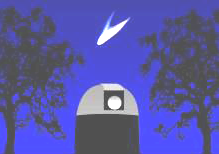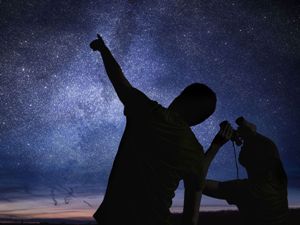Wynyard Planetarium and Observatory
Stargazing |
BACK |
|
|
Stargazing is a fun way to learn about astronomy and some science at the same time. Plus you don’t really need much equipment for stargazing to get a taste for the wonders of the night sky.
You don't even need a telescope - they can be expensive and may be difficult to carry to your desired observing location.
All you need are your eyes, possibly some binoculars (10x50 are recommended), lightweight collapsible camping chairs or a ground mat, a warm blanket for when the nights get a bit chilly and a star map or app. |
|||
|
To start with you need to know where north, south, east and west are, you can use a compass on your phone or Google maps.
You will also need an astronomy app for your phone (and computer). One of the best is Stellarium, you can find the link for this on our Downloads page. |
|
|||
The 12 best places in the UK to stargaze according to the Sky at Night magazine are -
Northumberland National Park North York Moors National Park Galloway Forest Park Brecon Beacons Dark Sky Reserve Cairngorms National Park Exmoor Dark Sky Reserve The Antrim Coast Elan Valley, Powys Isle of Coll Oxford Island National Nature Reserve, Armagh Snowdonia Dark Sky Reserve South Downs National Park

The Park been awarded Gold Status as an International Dark Sky parkand contains numerous Dark Sky Discovery sites from its southern border with County Durham to the Scottish Borders to the north.
It also includes Kielder Observatory and Battlesteads Dark Sky Observatory. More details can be found here.
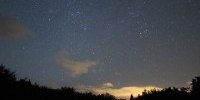
The park actually has three Dark Sky Discovery sites - Sutton Bank National Park Centre, The Moors National Park Centre and Dalby Observatories.
The park offers numerous places to stargaze and even holds a Dark Skies Festival every February.
More details including a dark sky map showing sites and accomodation can be found here.
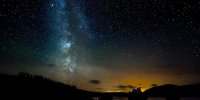
The Galloway Forest Park was the first in the UK to be given Gold Tier status as a Dark Sky Park and has three visitor centres accross the park,
Kirroughtree, Clatteringshaws and Glentrool. The park also includes the Scottish Dark Sky Observatory close to Loch Doon.
More details of the Park and Observatory can be found here.

This was the first area in Wales to be accredited as an International Dark Sky Reserve.
The National Park often run stargazing and meteor spotting events. More details can be found here.
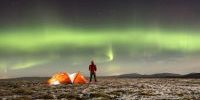
The Glenlivet and Tomintoul area in the Cairngorms National Park is one of the best places to discover the night sky.
It has also been awarded Gold Status as an International Dark Sky park.
The park runs astronomy events troughout the year, more details can be found here.
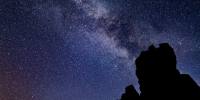
The reserve was Europe's first Dark Sky Reserve and has numerous sites for stargazing with minimal light pollution. It also has a Dark Sky Festival at the end of October each year.
The National Park centres also run stargazing events and can provide telescope hire, more details can be found here.
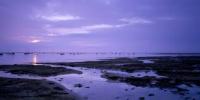
The north coast of Antrim has some of the darkest night skies in Northen
Ireland, Carrick-a-Rede itself being designated a Dark Sky Discovery
site. Stargazing sessions are often held locally by the Northern Ireland Amateur Astronomy Society together with the National Trust.
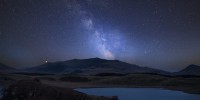
Elan Valley was awarded a silver status as a Dark Sky park in 2015.
There are numerous places throughout the Park to stargaze and they often run guided tours.
More details can be found here.
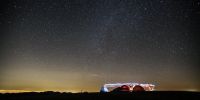
This Scootish island is one of the best places in Scotland to stargaze.
There are no street lights on the island and it was designated a Dark Sky Island in 2013, on of only two Dark Sky Islands in the UK.
There are three official night sky viewing sites on the island, Totronald RSPB Reserve, Cliad football pitch and Ariangour village, details of which can be found
here.
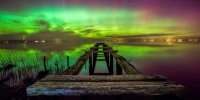
Located on on the shores of Lough Neagh the Reserve is one of only two Dark Sky Discovery sites in Northern Ireland the county also boasts its own planetarium and observatory.
Details of the Discovery Centre can be found
here.
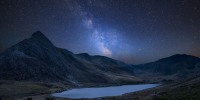
Snowdonia was awarded it's Dark Sky Reseve title in 2015, and is helped by the fact this area of Wales is one of the darkest in the UK.
It boasts five areas of interest to stargazers, Llyn y Dywarchen; Llyn Geirionydd; Llynnau Cregennen; Bwlch y Groes and Tŷ Cipar, details of all five can be found
here.
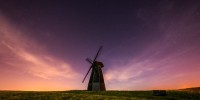
The National Park is also a Dark Sky Reserve and boasts ten sites of the darkest skies in the south of England.
The Park also hosts a two week long Dark Sky Festival every February, more details can be found
here.
